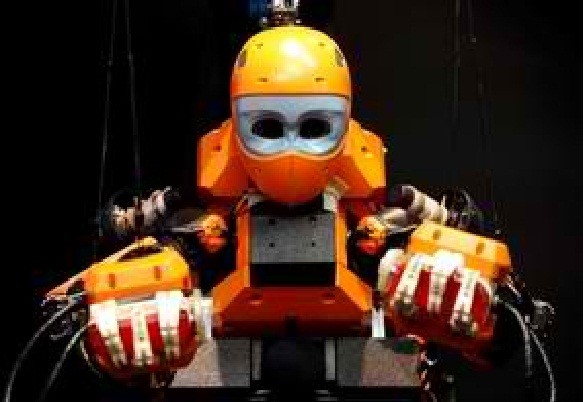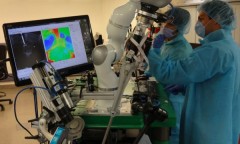By Lynn Palec, | May 06, 2016

Humanoid Diving Robot OceanOne, with a humanoid torso and a mermaid-like tail section, studded with thrusters and sensors to keep the mer-bot swimming is seen during its presentation at the History Museum in Marseille, France, April 28, 2016.
Scientists recently launched OceanOne, a diving robot which aims to help ocean explorers in exploring the depths of the ocean. Affectionately called a robot mermaid, OceanOne can go to ocean depths that are too dangerous for humans to explore. While OceanOne is diving deep in the ocean, the robot can be controlled by humans from the safety of a boat.
Like Us on Facebook
Scientists subjected OceanOne to its first real world test. The diving robot surveyed the wreckage of La Lune, a vessel believed to belong in King Louis XIV's fleet, according to Live Science. The shipwreck lay untouched and unexplored in the bottom of the ocean since it sank in 1664. The extreme depth of the location of the shipwreck makes it almost impossible for humans to reach.
OceanOne measures about 5 feet in length and has looks similar to a mermaid, it has human like features from the waist up. It has a torso, a head which is equipped with stereoscopic vision, and articulated arms. Its lower section holds the computer system, its power supply, and an array of eight multidirectional thrusters that helps it glide through the ocean.
The OceanOne robot can be controlled by a computer scientist using a set of joysticks. The robot combines artificial intelligence, sensory feedback and sophisticated mechanical construction in order to perform underwater tasks. The robot can retrieve delicate artifacts from the wreckage and then put it in a box so that it can be safely brought to the surface.
OceanOne is considered as a remotely operated vehicle or ROV. These type of machines are commonly used in deep ocean exploration. Unlike common ROVs, OceanOne is designed so that it can perform other tasks aside from simply investigating parts of the ocean. The team behind OceanOne claims that the robot has the flexibility and the dexterity of a human driver.
The creators of OceanOne also built he robot so that whoever is driving it can actually feel what the robot is touching. The engineers were able to achieve this feature by adding sophisticated force sensors and haptic feedback into the hands of OceanOne.
Stanford University professor and head of the OceanOne project Oussama Khatib said in a statement, "The intent here is to have a human diving virtually. You can feel exactly what the robot is doing."
-
Use of Coronavirus Pandemic Drones Raises Privacy Concerns: Drones Spread Fear, Local Officials Say

-
Coronavirus Hampers The Delivery Of Lockheed Martin F-35 Stealth Fighters For 2020

-
Instagram Speeds Up Plans to Add Account Memorialization Feature Due to COVID-19 Deaths

-
NASA: Perseverance Plans to Bring 'Mars Rock' to Earth in 2031

-
600 Dead And 3,000 In The Hospital as Iranians Believed Drinking High-Concentrations of Alcohol Can Cure The Coronavirus

-
600 Dead And 3,000 In The Hospital as Iranians Believed Drinking High-Concentrations of Alcohol Can Cure The Coronavirus

-
COVID-19: Doctors, Nurses Use Virtual Reality to Learn New Skills in Treating Coronavirus Patients











